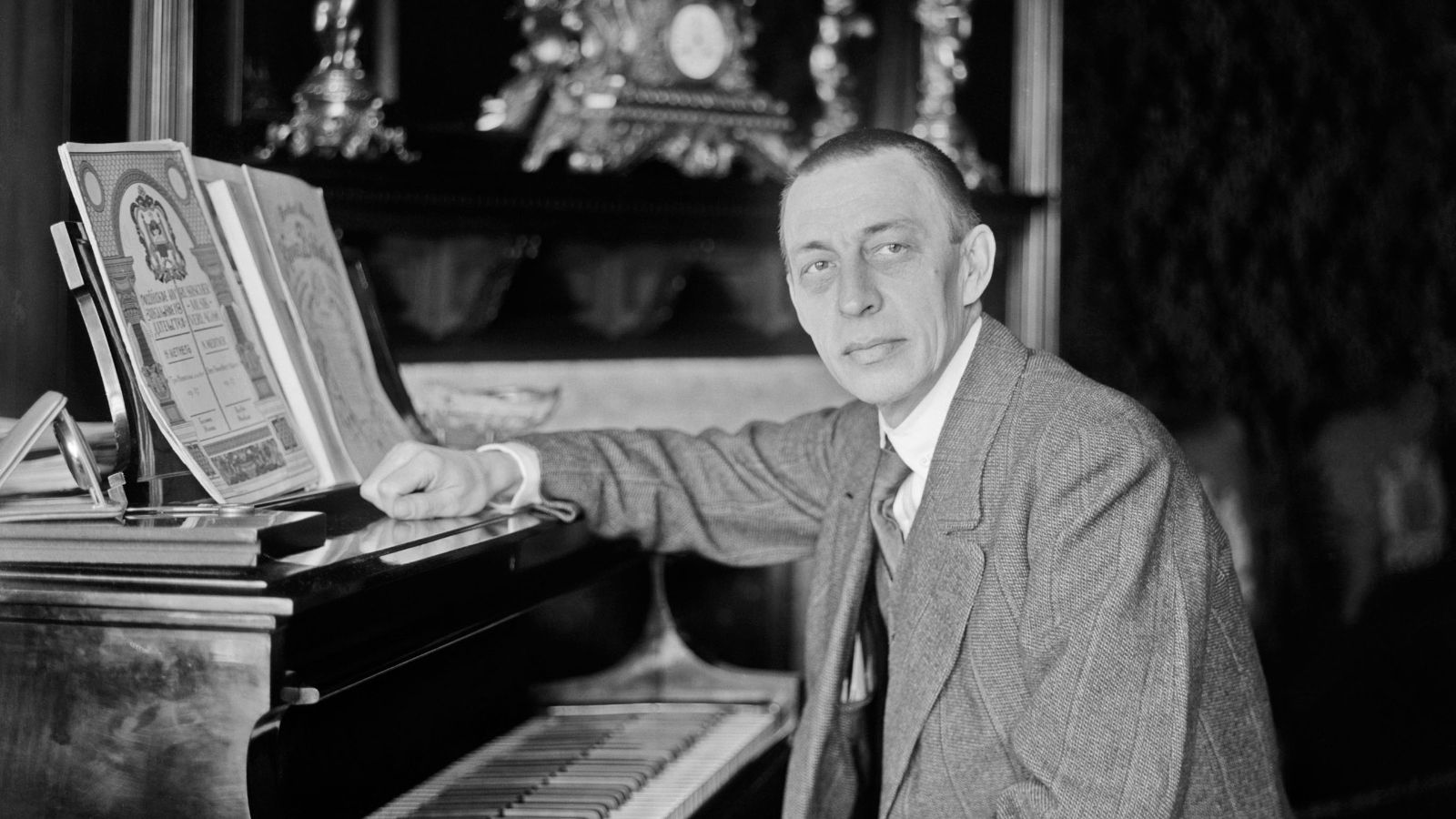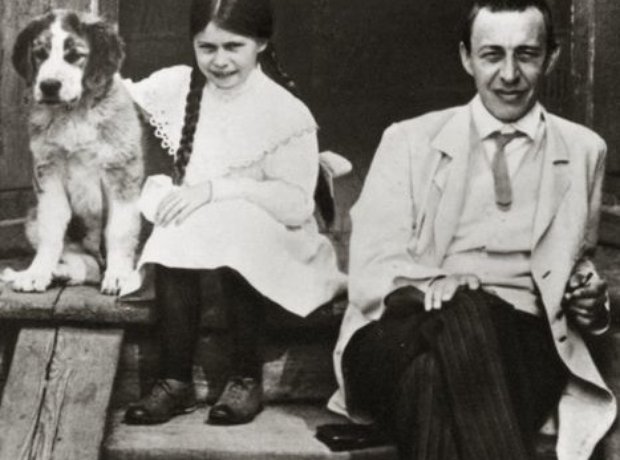April Composer of the Month Rachmaninov (Rachmaninoff)
ConversazioniClassical Music
Iscriviti a LibraryThing per pubblicare un messaggio.
1Tess_W
Please comment, made additions, etc. Who would like to volunteer for May?
I choose Sergei Rachmaninov (1873-1943). Difference in spelling of names: Rachmaninov is the Russian spelling, Rachmaninoff is the English spelling, or so I've read. (conflicting accounts) Rachmaninov was a Russian composer, mostly for the piano. He composed his first piano concerto when he was 18. He was considered a child prodigy. The premier of his first symphony in 1897 was a disaster. The reason is debatable, but the most likely is that the conductor was drunk. Rach (as I'm going to call him to save my keyboard!), went into a deep depression and had to have psychiatric help with hypnosis to recover. He dedicated his second symphony to Dahl, his psychiatrist.

pic from Steinway & Sons: https://www.steinway.com/artists/sergei-rachmaninoff
Rach's Piano Concerto No. 2 is his most popular. It was used in the movie "Brief Encounter." (1946)
You can listen to Opus 18 from that concerto here: https://www.youtube.com/watch?v=rEGOihjqO9w (wow does that pianist have big hands!) THIS IS BEAUTIFUL! Rach wrote this at a low point in his life. His country was in a state of civil unrest which would lead to the Russian Revolution. He would leave Russia in 1917 for the U.S.
Speaking of big hands, Rach is known for his rather large hands. He was able to span 12 white keys with his right hand. You can't really tell by the picture(s):

In 1902 Rach announced that he was marrying his first cousin--a shocker because in Russia this was not permitted. He circumvented the required permission from the Czar. They had 2 daughters and were still married when Rach passed away.

Following his marriage, Rach would begin to give private lessons and even spent 2 years as director of the Bolshoi Ballet. But following the Russian Revolution of 1905, tired of worker's demands, he handed in his resignation. Influenced by Richard Wagner, he was one of the first to designate the modern arrangement of the orchestra players in the pit and the modern custom of standing while conducting. He also worked with each soloist on their part, even accompanying them on the piano.
Amidst the Russian Revolution of 1917, Rach was asked to perform 12 concerts in Finland. He packed up his family and went to Helsinki and fulfilled his contract for the next year. In 1917 he and his family immigrated to the U.S. He turned down the offers to conduct 3 different symphonies, but did schedule 36 piano recitals for the year. He came down with the Spanish flu and played during his recovery. He quickly became financially secure and had penthouses on both coasts.
Rach only composed 6 works once he immigrated to the U.S. He claimed the desire to compose was left behind when he "lost his country and himself."
Rach's schedule was much like that of a teacher. He played 50-60 concerts in 9 months and then he and his family took 3 months off, traditionally at a beach house for rest. During one of these rests, Rach completed his final composition, Symphonic Dances (Op. 45). It is his only piece he composed entirely while living in the US. Conductor Ormandy and the Philadelphia Orchestra premiered the piece in January 1941, which Rachmaninov attended.
In 1941-1942, Rach's health took a turn for the worse. He suffered from sclerosis, lumbago, neuralgia, high blood pressure, and headaches. His doctor advised him to move to a warmer climate, so he permanently relocated to Beverly Hills, where he became friends and often dined with Igor Stravinsky, a fellow Russian. They often talked Russian politics. Rach's health continued to fail and by 1943 he could not eat without losing his breath, so he didn't eat. He died that same year, 4 days before his 70th birthday, of melanoma. Rach's will asked that he be buried in Moscow, but since he was an American citizen, Russia would not permit it. However, in 2015, Russia announced its intention to seek reburial of Rachmaninov's remains in Russia, claiming that Americans have neglected the composer's grave. Relatives protested and for now he remains buried in New York.
His music:
Rachmaninov's style was greatly influenced by Tchaikovsky. Especially important is Rach's use of unusually widely spaced chords for bell-like sounds: this occurs in many pieces, most notably in the choral symphony The Bells, the Second Piano Concerto, the E-flat major Étude-Tableaux (Op. 33, No. 7), and the B minor Prelude (Op. 32, No. 10). "It is not enough to say that the church bells of Novgorod, St Petersburg and Moscow influenced Rachmaninov and feature prominently in his music. This much is self-evident. What is extraordinary is the variety of bell sounds and breadth of structural and other functions they fulfill." (Carouthers, 2006, The Reappraisal of Rachmaninov's Music) You can listen to part of The Bells here: https://www.youtube.com/watch?v=E8FIvOWYsyw
The Best of Rachmaninoff: https://www.youtube.com/watch?v=vpaPWuDQUcc
Info from: Wikipedia, Classic FM, Classical Music for All, and Encyclopedia Britannica
I choose Sergei Rachmaninov (1873-1943). Difference in spelling of names: Rachmaninov is the Russian spelling, Rachmaninoff is the English spelling, or so I've read. (conflicting accounts) Rachmaninov was a Russian composer, mostly for the piano. He composed his first piano concerto when he was 18. He was considered a child prodigy. The premier of his first symphony in 1897 was a disaster. The reason is debatable, but the most likely is that the conductor was drunk. Rach (as I'm going to call him to save my keyboard!), went into a deep depression and had to have psychiatric help with hypnosis to recover. He dedicated his second symphony to Dahl, his psychiatrist.

pic from Steinway & Sons: https://www.steinway.com/artists/sergei-rachmaninoff
Rach's Piano Concerto No. 2 is his most popular. It was used in the movie "Brief Encounter." (1946)
You can listen to Opus 18 from that concerto here: https://www.youtube.com/watch?v=rEGOihjqO9w (wow does that pianist have big hands!) THIS IS BEAUTIFUL! Rach wrote this at a low point in his life. His country was in a state of civil unrest which would lead to the Russian Revolution. He would leave Russia in 1917 for the U.S.
Speaking of big hands, Rach is known for his rather large hands. He was able to span 12 white keys with his right hand. You can't really tell by the picture(s):
In 1902 Rach announced that he was marrying his first cousin--a shocker because in Russia this was not permitted. He circumvented the required permission from the Czar. They had 2 daughters and were still married when Rach passed away.

Following his marriage, Rach would begin to give private lessons and even spent 2 years as director of the Bolshoi Ballet. But following the Russian Revolution of 1905, tired of worker's demands, he handed in his resignation. Influenced by Richard Wagner, he was one of the first to designate the modern arrangement of the orchestra players in the pit and the modern custom of standing while conducting. He also worked with each soloist on their part, even accompanying them on the piano.
Amidst the Russian Revolution of 1917, Rach was asked to perform 12 concerts in Finland. He packed up his family and went to Helsinki and fulfilled his contract for the next year. In 1917 he and his family immigrated to the U.S. He turned down the offers to conduct 3 different symphonies, but did schedule 36 piano recitals for the year. He came down with the Spanish flu and played during his recovery. He quickly became financially secure and had penthouses on both coasts.
Rach only composed 6 works once he immigrated to the U.S. He claimed the desire to compose was left behind when he "lost his country and himself."
Rach's schedule was much like that of a teacher. He played 50-60 concerts in 9 months and then he and his family took 3 months off, traditionally at a beach house for rest. During one of these rests, Rach completed his final composition, Symphonic Dances (Op. 45). It is his only piece he composed entirely while living in the US. Conductor Ormandy and the Philadelphia Orchestra premiered the piece in January 1941, which Rachmaninov attended.
In 1941-1942, Rach's health took a turn for the worse. He suffered from sclerosis, lumbago, neuralgia, high blood pressure, and headaches. His doctor advised him to move to a warmer climate, so he permanently relocated to Beverly Hills, where he became friends and often dined with Igor Stravinsky, a fellow Russian. They often talked Russian politics. Rach's health continued to fail and by 1943 he could not eat without losing his breath, so he didn't eat. He died that same year, 4 days before his 70th birthday, of melanoma. Rach's will asked that he be buried in Moscow, but since he was an American citizen, Russia would not permit it. However, in 2015, Russia announced its intention to seek reburial of Rachmaninov's remains in Russia, claiming that Americans have neglected the composer's grave. Relatives protested and for now he remains buried in New York.
His music:
Rachmaninov's style was greatly influenced by Tchaikovsky. Especially important is Rach's use of unusually widely spaced chords for bell-like sounds: this occurs in many pieces, most notably in the choral symphony The Bells, the Second Piano Concerto, the E-flat major Étude-Tableaux (Op. 33, No. 7), and the B minor Prelude (Op. 32, No. 10). "It is not enough to say that the church bells of Novgorod, St Petersburg and Moscow influenced Rachmaninov and feature prominently in his music. This much is self-evident. What is extraordinary is the variety of bell sounds and breadth of structural and other functions they fulfill." (Carouthers, 2006, The Reappraisal of Rachmaninov's Music) You can listen to part of The Bells here: https://www.youtube.com/watch?v=E8FIvOWYsyw
The Best of Rachmaninoff: https://www.youtube.com/watch?v=vpaPWuDQUcc
Info from: Wikipedia, Classic FM, Classical Music for All, and Encyclopedia Britannica

